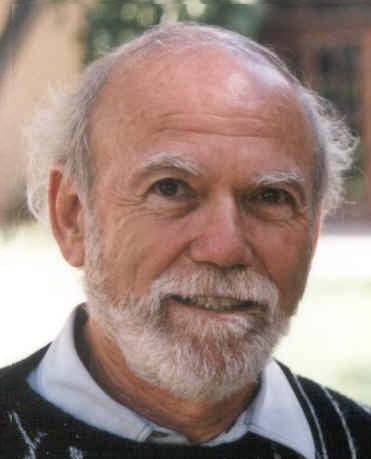Submitted
Caltech Professor Emeritus Barry Barish, who delivered an engaging Orcas Currents lecture on the subject in July 2016, has just been awarded a share of the 2017 Nobel Prize in physics for his crucial contributions to the discovery of gravity waves.
These delicate ripples in the fabric of spacetime were first detected in September 2015 by the Laser Interferometer Gravity-wave Observatory, built under his leadership during the late 1990s. Professor Barish will share the Prize — to be officially awarded in Stockholm on Dec.10 — with physicists Rainer Weiss of MIT and Kip Thorne of Caltech, who conceived the project and led it during the 1980s.
Over a billion years ago, two massive black holes — one tipping the scales at 36 times the mass of the sun and the other at 29 times — merged into one that weighed in at 62 solar masses. Spacetime shuddered. The resulting difference of three solar masses was converted into sheer energy according to Einstein’s famous equation E = mc2, briefly releasing more energy than all the stars in the visible universe.
Gravity waves from this black-hole merger spread out through the universe at the speed of light. They finally reached Earth eons later, stretching it ever so slightly in one dimension and squeezing it in another. Two ultrasensitive detectors called “laser interferometers,” one at the Pacific Northwest Laboratory in Eastern Washington and the other in Louisiana, detected this feeble spacetime vibration several milliseconds apart, triggering what promises to become a major revolution in physics.
LIGO researchers have since recorded three more stunning black-hole mergers, the last this past August. When the interferometers are eventually tuned to their highest sensitivities, scientists expect to be able to detect almost one gravity wave passing through Earth per day! Predicted 100 years ago by Albert Einstein in his General Theory of Relativity, gravity waves and the black-hole mergers that generate them are about to become commonplace events.
On July 24, 2016, Professor Barish recounted this spectacular scientific discovery in an Orcas Currents lecture titled “Gravity’s Music: Einstein, Black Holes and Cosmic Chirps.” Over 150 islanders listened raptly. A videotape of his presentation can be found at: https://orcascurrents.org/barry-barish-caltech-professor-of-physics-on-einstein-black-holes-and-a-cosmic-chirp-the-ligo-discovery-of-gravity-waves/
A high-energy physicist by training, Barish served as the principal investigator and founding director of the LIGO Laboratory. He is widely credited as the skillful manager who finally got these sprawling, L-shaped facilities built — with each arm four kilometers or 2.5 miles long — enabling the discovery to occur.
“Without him there would have been no discovery,” said Nobel laureate Sheldon Glashow, a theorist.
A member of the National Academy of Sciences and the American Academy of Arts and Sciences, Professor Barish is a Fellow of the American Association for the Advancement of Science and of the American Physical Society, in which he served as president.
Soon to end its third successful year and planning its fourth, the Orcas Currents lecture series hopes to bring to this island a continuing stream of similarly distinguished lecturers on science, technology and culture.



